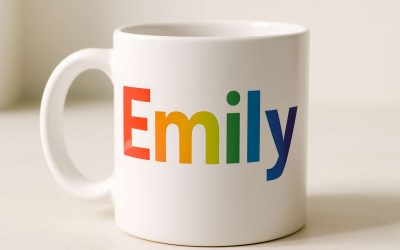Mug printing is a great way to create personalized gifts for friends and family members. It is also a fun and effective promotional tool for businesses. Whether you want to print a bold illustration or a witty quote, custom mugs will make a lasting impression on anyone who sees them. When choosing a design, consider the recipient’s personality and preferences. For example, if you’re gifting a mug to someone who loves coffee, choose a mug with a vibrant, rich color.
Mugs are a popular gift choice for both friends and business associates alike. Whether you’re shopping for a colleague or a special someone, a custom-printed mug will be sure to put a smile on their face. Custom mugs can be printed with any design, including pictures, text, and logos. They are the perfect way to show your appreciation for someone and they can be a unique keepsake that will be treasured for years to come.
To print a mug, you’ll need a heat press and sublimation ink. Sublimation ink is a heat-activated liquid that bonds with polymers in the mug. The heat press transfers the ink from paper to mug, creating your desired design. Mugs are coated with a polymer, which allows the ink to bond and remain intact even after repeated washings.
Screen printing is an inexpensive and easy method for mug printing, although it’s less durable. This process uses stencils to create the image on the mug. The ink passes through a stretched mesh and the little holes in the stencil shape the final design on the mug. It’s not as detailed as other methods and only works well for one or two colors.
Another popular mug printing technique is transfer printing. This method is better suited for more intricate designs and is ideal for bone china or ceramics with a delicate curve. It’s a more labor-intensive option, but it’s more flexible with color and has a wider range of options than direct screen printing.
If you’re looking for a more durable print, consider dye sublimation. This method uses specialty inks, heat, and pressure to transfer images from paper to the mug’s polymer coating. The dyes bind with the polymers, making the mug waterproof and resistant to scratches. It’s also an environmentally friendly option, avoiding the use of toxic chemicals like Cadmium and Lead.
Lastly, sandblasting is an effective and attractive mug printing method that’s perfect for curved surfaces and a variety of materials. It engraves your design into the surface of the mug, giving it an impressive finish. This technique is suitable for a wide range of materials, and it can be used on both glossy and matte finishes.
Regardless of which printing method you choose, it’s important to test your design before putting it into production. A test print will give you a better idea of how the design will look on the finished mug, and it will help to ensure that your mug is high-quality. A poorly-made mug will not only look sloppy, but it could cause damage to the cup’s finish and break after many uses.



0 Comments